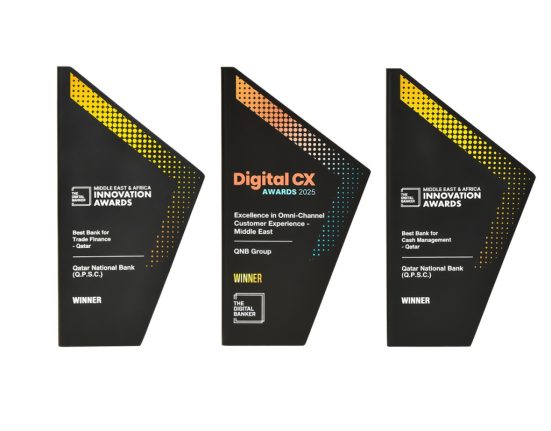Your credit score helps determine if you’ll qualify for a loan and what interest rate you’ll get. For mortgages, which are the biggest loans most people will take out, the score can translate to thousands of dollars in savings — or higher costs — over the life of the loan.
Mortgage lenders will soon have the choice to use either a traditional FICO score or an updated version from a rival, VantageScore, to evaluate a borrower’s creditworthiness, a top housing finance regulator announced this month.
The post on X came from William Pulte, director of the Federal Housing Finance Agency, which oversees Fannie Mae and Freddie Mac, two mortgage finance companies that play a crucial role in the market for home loans. (Fannie alone owns or guarantees more than 25% of all single-family mortgage debt, according to regulatory filings.) Lenders selling loans to Fannie Mae and Freddie Mac are now allowed to use VantageScore, in addition to FICO, to evaluate borrowers, Pulte declared.
Lenders, long used to FICO, are awaiting more details about how the new credit score will be used, and it may take time for them to adopt the new option.
But Guy Cecala, executive chair at Inside Mortgage Finance, an industry publication, said VantageScore could potentially help younger borrowers or others with limited credit histories qualify for home loans or get better rates, saving them money. VantageScore’s formula heavily weighs on-time payments, he said, which can help borrowers who have less of a credit history.
VantageScore estimates that 5 million more prospective buyers could qualify to own a home under the new policy because its model allows a broader swath of people to get credit scores.
Why is another score option being added?
Pulte, and an update post on the agency’s website at fhfa.gov/policy/credit-scores, suggested the change would increase competition and expand borrowing opportunities to more people. FICO has long dominated the credit scoring industry, and the Consumer Financial Protection Bureau raised concerns last year about increases in the fees that FICO charges for its scores.
In recent years, the government had begun planning to update the “classic” FICO model used by Freddie and Fannie, and to add VantageScore’s 4.0 model as an option. The change was targeted for the end of this year, but in January it was delayed. Then Pulte declared that VantageScore could be used immediately.
When will this happen?
Tony Hutchinson, a VantageScore spokesperson, said he anticipated that lenders could begin using the score within “weeks, rather than months.” But Fannie Mae and Freddie Mac first must revise their selling guides for lenders, according to the online update. And it’s unclear how many lenders will rush to add VantageScore.
Jaret Seiberg, an analyst at TD Cowen, said in a research note that it could take at least a year to tweak various systems to accept VantageScore. And lenders may end up “pressured” to buy scores from both FICO and VantageScore, he said, to make sure borrowers get the most affordable mortgages.
Pete Mills, senior vice president of residential policy and member engagement at the Mortgage Bankers Association, an industry group, said “there are many questions about the exact nature of what the change will be.”
A spokesperson for Bank of America, a large mortgage lender, said in an email that the bank was “taking a look at” VantageScore, but she didn’t offer details.
Why are credit scores important to the mortgage market?
An accurate assessment of borrower risk is crucial to attracting investors and pricing mortgage bonds. For decades, Fannie and Freddie, which buy mortgages, then repackage them as bonds and sell them to investors, have relied on FICO scores to determine a borrower’s likelihood of repaying. (They also consider other factors such as a borrower’s income and other debt.)
What’s the difference between a FICO score and a VantageScore?
The FICO score, developed decades ago by Fair Isaac Corp. as a three-digit summary of a borrower’s credit report, is familiar to almost anyone who has applied for a credit card, car loan or mortgage. The company says the FICO score is used by 90% of lenders in credit decisions. Generally, a score of at least 620 is needed to qualify for a mortgage acceptable to Fannie and Freddie.
VantageScore, created in 2006 as a FICO rival by the three big credit reporting bureaus — Equifax, Experian and TransUnion — has sought to increase its share of the credit scoring market.
Both models create scores ranging from 300 to 850 (the higher the better). But they can produce somewhat different scores for the same borrower because their formulas vary in how they weigh different aspects of a consumer’s credit report.
“You can’t just substitute a three-digit VantageScore for a FICO score,” said Will Lansing, Fair Isaac’s CEO. “They’re not the same.”
VantageScore contends that its VantageScore 4.0 model is more inclusive than the “classic” FICO score model, in part because it incorporates sources of data beyond loans, such as rent, utility and cellphone payments. Recent research has suggested that reporting on-time rent payments to credit bureaus can help establish scores for consumers who lack them and can help raise low scores.
FICO’s newest scoring system, known as FICO 10 T, also includes those components, Lansing said. Freddie and Fannie don’t yet use that model, he said, but many lenders that don’t sell their loans to the companies use it already. (FICO 10 T scores are expected to be added at an unspecified “later date,” according to an update posted on the housing finance agency’s website.)
While rent reporting is considered promising in expanding credit availability, few landlords report rents to credit bureaus, Lansing said, so data on its use as a predictor of repayment isn’t yet robust.
Sharon Cornelissen, director of housing for the Consumer Federation of America, said it seemed “extremely unlikely” that someone who couldn’t be scored through the FICO model would “suddenly qualify” for a mortgage with VantageScore.
Who decides what score a lender will use?
Lenders will decide which scoring model to use for a particular loan, according to the agency’s online update.
“For the time being,” the update says, Fannie and Freddie “will not accept scores from multiple models on a given loan.”
Both Lansing at FICO and consumer advocates say they are wary of a “lender choice” system. The government rejected that option several years ago, they said, because lenders could end up choosing the model that results in the highest score for a particular borrower so they can approve more loans.
That could put the scoring companies “in a race to have the most lax scores,” Lansing said, which is “a terrible idea.”
Chi Chi Wu, director of consumer reporting and data advocacy at the National Consumer Law Center, questioned whether adding VantageScore would truly increase competition in the credit scoring world since it is owned by the big three credit bureaus, which provide the raw data used in generating both scores.
What can borrowers do to prepare for applying for a mortgage?
Borrowers can obtain their credit reports for free from the three major bureaus at www.annualcreditreport.com and check them for accuracy. In general, paying bills on time, avoiding borrowing the maximum amount allowed on credit cards, and limiting the number of new credit cards opened can contribute to a healthy credit score, according to Experian.
Credit card companies, banks and other lenders often offer free FICO scores to their customers, and some banks and online financial sites, like NerdWallet and WalletHub, offer free VantageScores. (Free scores may be based on different versions of scoring software, so they may not be identical to those obtained by a lender for a loan application.)
Shopping around for a mortgage is also a good idea, but many borrowers don’t do that. Getting at least four quotes could save borrowers more than $1,200 a year on loan costs, according to research from Freddie Mac.







